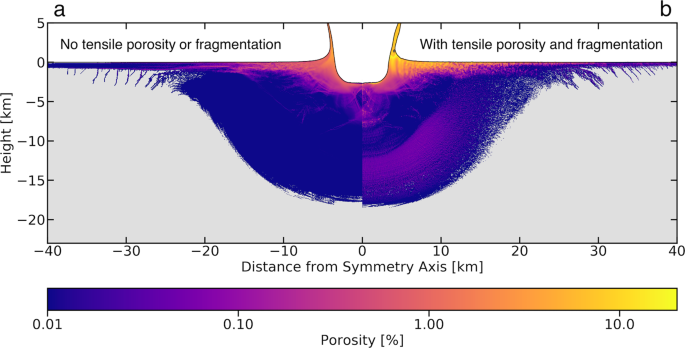衝突は月や惑星の多孔性や構造に科学者が考えていた以上に劇的な影響を与え、生命が生息できる可能性を高める。Impacts affect the porosity and structure of moons and planets more dramatically than scientists suspected, increasing their potential habitability for life
2022-08-17 パデュー大学
惑星科学者が惑星外の地質学、特に水や氷、さらには微生物の生命を含む貴重な物質の探索に役立てるため、こうした衝撃が惑星、小惑星、月、その他の岩石にどのように影響を及ぼすかを研究しています。
太陽系のすべての固体は、大小を問わず常に衝撃を受けています。地球上でさえ、すべての地点が少なくとも 3 つの大きな影響を受けています。月をテスト対象として使用して、ジョンソン、ウィギンズ、および彼らのチームは、影響と惑星の空隙率との関係を定量化することに着手しました。
研究者は、大規模な月の重力データと詳細なモデリングを使用して、大きな物体が月または他の惑星体に衝突すると、その衝突が表面や構造に影響を与える可能性があることを発見しました。
<関連情報>
- https://www.purdue.edu/newsroom/releases/2022/Q3/breaking-in-a-new-planet.html
- https://www.nature.com/articles/s41467-022-32445-3
初期惑星地殻における衝撃で生成された広範な空隙の存在 Widespread impact-generated porosity in early planetary crusts
Sean E. Wiggins,Brandon C. Johnson,Gareth S. Collins,H. Jay Melosh & Simone Marchi
Nature Communications Published:16 August 2022
DOI:https://doi.org/10.1038/s41467-022-32445-3

Abstract
NASA’s Gravity Recovery and Interior Laboratory (GRAIL) spacecraft revealed the crust of the Moon is highly porous, with ~4% porosity at 20 km deep. The deep lying porosity discovered by GRAIL has been difficult to explain, with most current models only able to explain high porosity near the lunar surface (first few kilometers) or inside complex craters. Using hydrocode routines we simulated fracturing and generation of porosity by large impacts in lunar, martian, and Earth crust. Our simulations indicate impacts that produce 100–1000 km scale basins alone are capable of producing all observed porosity within the lunar crust. Simulations under the higher surface gravity of Mars and Earth suggest basin forming impacts can be a primary source of porosity and fracturing of ancient planetary crusts. Thus, we show that impacts could have supported widespread crustal fluid circulation, with important implications for subsurface habitable environments on early Earth and Mars.


